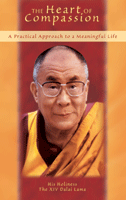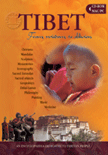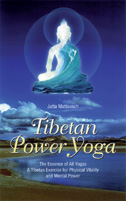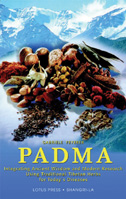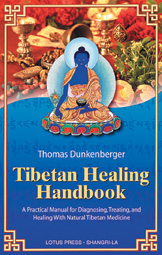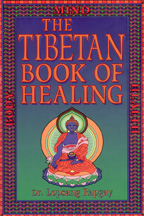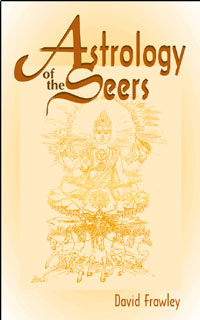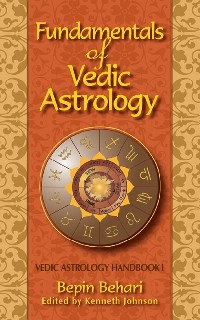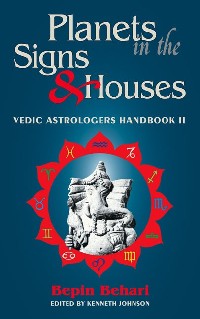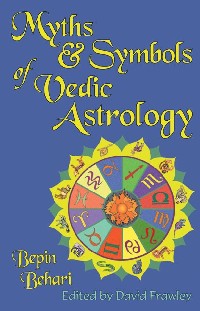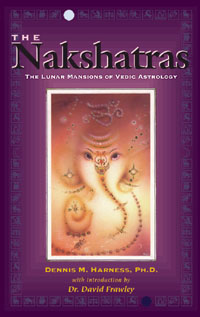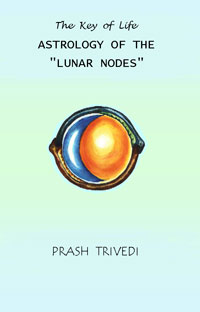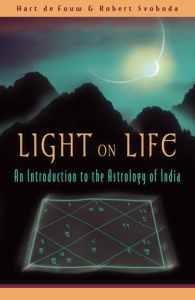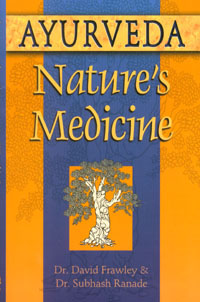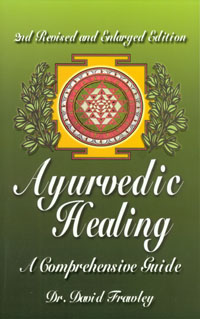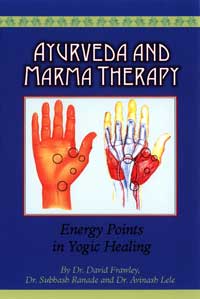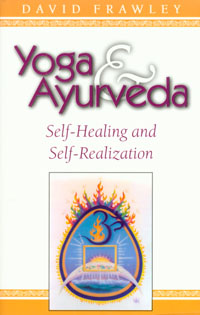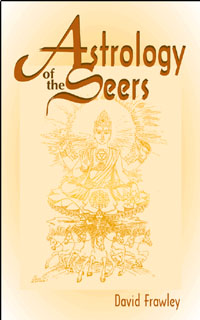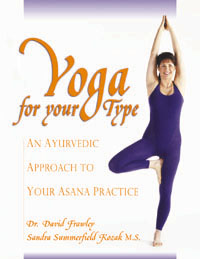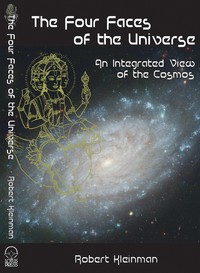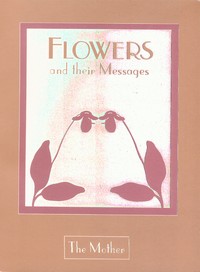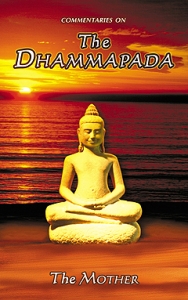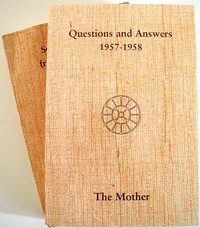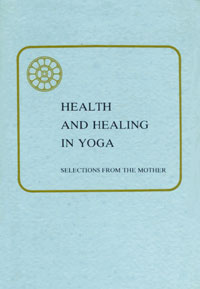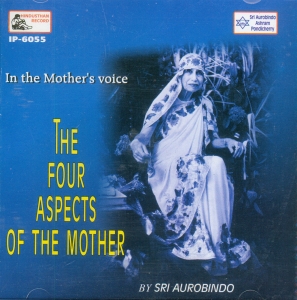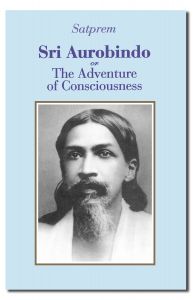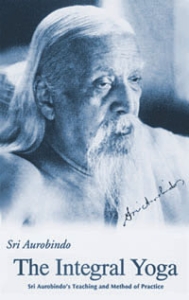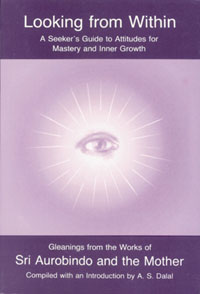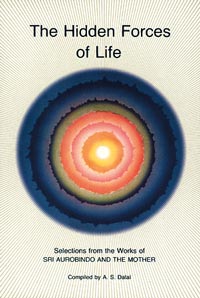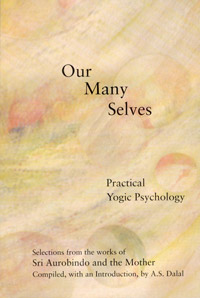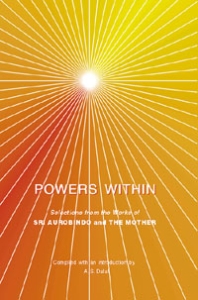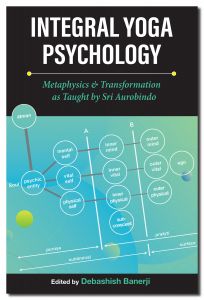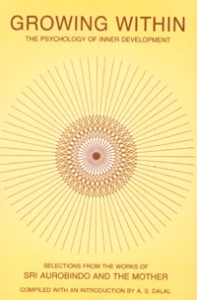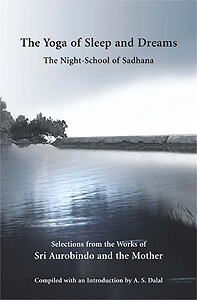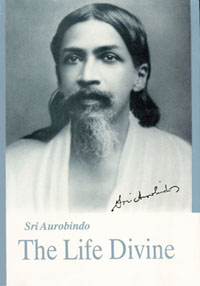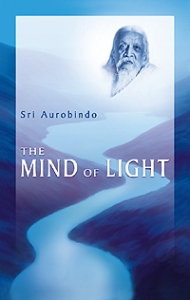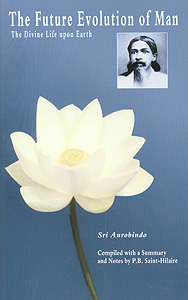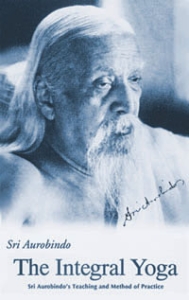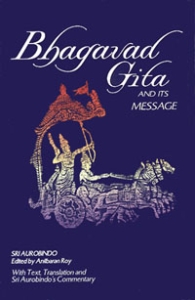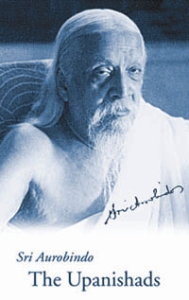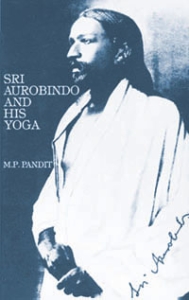The Wisdom of Tibet
By the Dalai Lama
Item # 990 064
168 pp pb$12.95
ISBN 0-940985-36-5
Item # 990 065
168 pp hb$19.95
ISBN 0-940985-38-1
The Heart of Compassion guides us step by step to an understanding of our human condition and how we can act to achieve a higher fulfillment than pure worldly enjoyment. He helps us create within ourselves the necessary texture of consciousness to live a life of harmony, peace and virtue.This book carefully balances philosophical concepts with a very practical, day-by-day approach to living a spiritual life. Of special note is his clear integration of the teachings of Jesus into his overall world view, showing how all teachings can find their harmony in the ultimate spiritual oneness and truth that underlies them all.
By Fournier & Joudet
Item # 990 187
CD ROM $44.95
ISBN 0-940985-71-3
This is the first interactive CD ROM encyclopedia dedicated to the Tibetan people and culture. Tibet evokes images of an ancient tradition, a philosophy, a way of life, religious practices and artistic wonders. The CD ROM contains 2200 photographs and iconographic documents, technical notes, 90 minutes of commentary and 40 minutes of original music.There are six main menus including Himalayan Art, Religious Thought, Tibet, Note Pad, Chronological Table and Iconography. Includes a glossary, slide shows and much more
By Jutta Mattausch
Item # 990 953
112 pp pb $9.95
ISBN 0-914955-30-6
The “Tibetan Power Yoga” is what the Tibetan Lama Tsering Norbu calls this set of motions that has given the people from the roof of the world physical vitality and mental power into ripe old age since time immemorial. Here is an absorbing story set in distant Tibet, yet could also take place within all of us anywhere in the world since it deals with the journey to the self.
By Gabriele Feyerer
Item # 990 796
176 pp pb $12.95
ISBN 0-914955-73-X
Padma Basic are herbal tablets made from formulas that stem from Tibetan Medicine and are produced in a small town next to Zürich, not far from the snow capped peaks of the Swiss Alps. The origin of Padma began with the cooperation between Karl Lutz, a Swiss pharmaceutical researcher, and a Polish doctor who was acquainted with Tibetan medicine. They worked out a precise and unique list of indications for these traditional formulas. In a manner that is easily understood, the author reveals the large area of application of this precious remedy for today’s diseases.
By Thomas Dunkenberger
Item # 990 957
240 pp pb $15.95
ISBN 0-914955-66-7
This book will inform you about the essential correlations and approaches taken by the Tibetan science of healing. It describes the entire spectrum of application possibilities for those who want to study Tibetan medicine and use itfor treatment purposes. At the same time, it provides information about holistic remedies so that interested readers can take action to restore their inner harmony and health.
By Dr. Lobsang Rapgay
Item # 990 856
201 pp pb $12.95
ISBN 0-910261-40-7
Dr. Lobsang Rapgay is one of the foremost Tibetan doctors in the world today and is also a psychologist. TheTibetan Book of Healing contains many helpful practices, going into diet, herbs and meditation and providing a number of methods and techniques to follow for self-healing purposes. It contains a wealth of information that will make the book a constant companion for those really seeking to improve their state of well- being.
Vedic Astrology
Vedic Astrology, also known as Jyotish or Hindu Astrology, is the traditional astrology of India and stems from its spiritual and yogic culture going back thousands of years. It integrates karma and spiritual destiny with the unfolding of the current life of the individual. As such it goes far beyond the information generally provided by Western astrology. The field of Vedic Astrology has recently become much more accessible in the West as more noted scholars and students of the ancient sciences begin to write on the subject.
While there are similarities to Western astrology, there are also substantial differences. Vedic astrology, perhaps because of its spiritual background, delves deeply into the movements of life within the larger context of destiny, karma and vast movements of time and evolution through time. It is impossible to give a meaningful description of Vedic Astrology in a short overview, so we shall try to provide guidance on books that illuminate the field so that you can find resources that can introduce you to the subject in a realistic way.
Books on Vedic Astrology:
Astrology of the Seers
by David Frawley
304 pp Paper Back
ISBN: 0914955896
Vedic Astrology, also called Jyotish, is the traditional astrology of India and its profound spiritual culture. It possesses a precise predictive value as well as a deep interpretation of the movement of life, unfolding the secrets of karma and destiny. Astrology of the Seers, first published in 1990, is regarded as one of the classic modern books on Vedic astrology, covering all the main aspects of its philosophy, background and practice, including chart interpretation and methods of balancing planetary influences such as mantra and gem therapy. The present edition has been thoroughly revised and updated.
Fundamentals of Vedic Astrology
Vedic Astrology Handbook I
by Bepin Behari
Edited by Kenneth Johnson
280 pp Paper Back
ISBN: 0940985527
This book introduces the concepts and operations of Vedic Astrology. It presents the component’s of the astrologer’s art-the planets, signs, houses and lunar mansions. The author goes into the rules that determine planetary strength, the construction of the divisional charts and the principal combinations, and much more. The book presents the components of the astrological art — the planets, the signs, the houses and the lunar mansions. They are presented within the context of a continuing process of self-discovery and spiritual development. The book goes into the rules which govern the determination of planetary strength, the construction of the divisional charts (vargas) and the principle yogas or combinations.
Planets in the Signs & Houses
Vedic Astrologers Handbook II
by Bepin Behari
Edited by Kenneth Johnson
256 pp Paper Back
ISBN: 0940985535
This book follows up on the foundation provided in Fundamentals of Vedic Astrology and delves into questions such as impulses likely to be generated by the planets in different signs and houses of the natal chart. The author makes this subject eminently readable and cuts through the obscurity of the centuries to present a clear and effective science with a deep psychological background and underpinning. Every planet precipitates its special influence depending on the sign in which it is placed and the house it occupies. This is virtually the only accessible volume in this field which offers a thorough treatment of this important subject.
Myths & Symbols of Vedic Astrology
280 pp Paper Back
ISBN: 0940985519
Vedic Astrology has a wealth of myths and symbols, some in common with Western Astrology. Many of the secrets of life and consciousness can be discovered through them. Students of mythology will also find it helpful in unlocking the astrological keys to the great archetypes of the psyche. This book also explores the Nakshatras, the 27 lunar mansions, a unique aspect of the Vedic system of astrology. Those who are studying Vedic or Hindu astrology will find this book to be invaluable in opening the door to the inner meaning of the planets and how they are viewed in the Vedic system. Many of the secrets of life and consciousness can be uncovered through the numerous myths and symbols that permeate the system. Mythology is the basis of astrology and astrology is the basis of mythology. Most myths relate to the cycles of time and light, as revealed by the stars and planets. They show our deeper connection to the cosmos and to the cosmic forces by which our soul or psyche is patterned.
For more information about Vedic Astrology you may want to contact:
American Council of Vedic Astrology
David Frawley provides a Distance Learning Course in Vedic Astrology. Contact him directly at:
The Nakshatras
The Lunar Mansions of Vedic Astrology
by Dennis M. Harness, Ph.D.
with introduction by Dr. David Frawley
216 pp Paper Back
ISBN: 0914955837
This book shows you how to access the wisdom of the Nakshatras in your personal life and for society. Through it the modern reader can understand the energies of their stars and learn how to utilize these to bring their lives into harmony with the great forces of the universe. This book is must reading not only for any students of astrology but for anyone interested in self-development or spiritual growth.
The Key of Life
Astrology of the “Lunar Nodes”
by Prash Trivedi
415 pp Paper Back
ISBN: 0940985330
Prash Trivedi is the first astrologer to put together an exhaustive, historical, numerological as well as esoteric account of the Lunar Nodes, including their relevance in the present day and age. Dr. David Frawley, the well known Vedic scholar, writes of Mr. Trivedi – “India’s most insightful young astrologer offers what is probably the longest, most researched and most original book on the Lunar Nodes published in modern times. This book is worthy of serious examination by all students of Astrology and all those interested in the great mysteries of life, death, karma and transformation.” The book includes astrological charts for famous historical figures for example and reference.
NEW TITLES:
Light On Life
An Introduction to the Astrology of India
by Hart Defouw and Robert Svoboda
Jyotish, or Indian astrology is introduced to the Western reader by two expert and long-term practitioners of the science. This is a complete and thorough handbook that can be appreciated and understood even if you start out with very little background in the science of astrology. Jyotish states that by considering the state of the cosmos when an event occurs, we can begin to understand its nature and prepare an appropriate response.
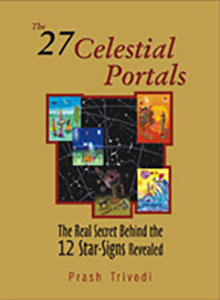
The 27 Celestial Portals
Subtitle: The Real Secret Behind the 12 Star-Signs Revealed
Prash Trivedi
ISBN: 0-940985-84-5
Price: $27.99
Pages: 471 trade paper; 5 3/8″ x 8 1/2″ format
It is common knowledge that the 12 star-signs map the sky and set the stage for the drama of life. This book expands this awareness manifold by revealing that it is the 27 constellations, and not the 12 signs, which truly map the ecliptic and provide the celestial backdrop for affairs on earth. Instead of taking away from the widely recognized meanings and significations of the 12 signs, they enrich them with a whole new depth of perspective and interpretation.
These 27 cosmic transmitters were known to most ancients across the globe as the celestial quarters of the gods. Their knowledge, however, has been most well preserved in the Vedic heritage of India, where they are known as Nakshatras. In addition to containing a 23 pronged dissection of these celestial portals, this work contains 27 color picture images that capture the functionings of these constellations in a way that words cannot. It is our hope that you will enjoy this cosmic journey as much as we have enjoyed making it available to you.
Prash Trivedi is the author of Key of Life, a leading introductory title in the field of Vedic Astrology
David Frawley
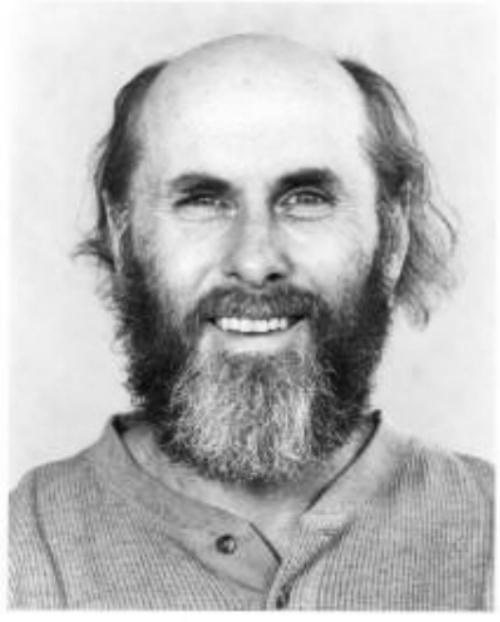
David Frawley (Pandit Vamadeva Sastri)
“David Frawley is one of the most important scholars of Ayurveda and Vedic Science today. I have great respect and admiration for his knowledge and the way he has expounded the ancient wisdom of the Vedas.” Deepak Chopra
“Frawley is an Indian in an American body. The ease with which he enters into the spiritual of the Indian tradition and renders its deeper concepts in terms of modern thought shows an unusual familiarity with this ancient wisdom.” M.P. Pandit, Secretary of Sri Aurobindo Ashram
“Certainly America’s most singular “practicing Hindu.”” Ashok Malik, India Today
“David Frawley is a formidable scholar of Vedanta and easily the best known Western Acharya of the Vedic wisdom.” Ashish Sharma, Indian Express, the Express Magazine
David Frawley (Pandit Vamadeva Shastri) is one of the few Westerners recognized in India as a Vedacharya or teacher of the ancient wisdom. He began his Vedic writings in 1979 under the guidance of M.P. Pandit, the secretary of the Sri Aurobindo Ashram. In 1991 under the auspices of the great Indian teacher, Avadhuta Shastri, he was named Vamadeva Shastri, after the great Vedic Rishi Vamadeva. In 1994 he was given the title of Pandit along with the Brahmachari Vishwanathji award in Mumbai for his knowledge of the Vedic teaching. Over the years Vamadeva has received many awards and honors for his work from throughout India.
In India, Vamadeva is recognized as a Vedacharya (Vedic teacher), a Vaidya (traditional Ayurvedic doctor), Jyotishi (Vedic astrologer), Puranic (Vedic historian) and Yogi. In India, his translations and interpretations of the ancient Vedic teachings have been given acclaim in both spiritual and scholarly circles. Vamadeva gives a great deal of time and attention to his India work and spends part of his year in India, engaged in various programs, teachings and travels.
In America, Vamadeva is known as a teacher of Ayurvedic medicine and of Vedic astrology (Jyotish) and has done pioneering work on both these subjects. He as been honored by many Ayurvedic groups, especially the National Ayurvedic Medical Association (NAMA), for which he is one of the four honorary advisors and received a lifetime achievement award in 2002. He has similarly been honored by Vedic astrology groups, and was the president of the American Council of Vedic Astrology (ACVA) from its origin in 1993 to 2003. In Sept. 2000, he was regarded as one of the 25 most influential Yoga teachers in America by the magazine Yoga Journal.
In Sept. of 2012, Vamadeva gave one of the two closing keynote speeches for the international conference that marked the opening of Sanchi University, near Bhopal India, which is scheduled to be the largest Buddhist university in South Asia, with a Vedic studies department as well. He has been asked to be a visiting professor for the future.
Vamadeva (David Frawley) presents Vedic knowledge in the Western world and in a lucid presentation recognized by the tradition itself. He has worked extensively teaching, writing, lecturing, conducting research and helping establish schools and associations in related Vedic fields over the last thirty years. He has studied and traveled widely gathering knowledge, working with Vedic teachers and groups in a non-sectarian manner.
Vamadeva sees his role as helping to revive Vedic knowledge in an interdisciplinary approach for the planetary age. He sees himself as a teacher and translator to help empower people to use Vedic systems to enhance their lives and aid in their own Self-realization. He regards Vedic wisdom as a tool for liberation of the spirit, not as a dogma to bind people or to take power over them. Vedic knowledge is a means of communing with the conscious universe and learning to embody it in our own life and perception.
You can find out more about his work by visiting his website at the American Institute of Vedic Studies.
The Writings of David Frawley
Ayurveda: Nature’s Medicine
by David Frawley and Dr. Subhash Ranade
368 pp Paper Back
ISBN: 0914955950
Ayurveda, Natures Medicine is an excellent introduction to the full field of Ayurvedic Medicine from diet and herbs to yoga and massage. It has a notable emphasis on practical self-care and daily life regimens that makes it helpful for everyone seeking health and wholeness. The book is an excellent primer for students beginning in the field and who wish to have a firm foundation to understand the entire system.
Ayurvedic Healing: A Comprehensive Guide
by David Frawley
468 pp Paper Back
ISBN: 0914955977
Ayurvedic Healing presents the Ayurvedic treatment of common diseases, covering over eighty different ailments from the common cold to cancer. It provides a full range of treatment methods including diet, herbs, oils, gems, mantra and meditation. The book also shows the appropriate life-style practices and daily health considerations for your unique mind-body type both as an aid to disease treatment and for disease prevention. This extraordinary book is a complete manual of Ayurvedic health care that offers the wisdom of this ancient system of mind-body medicine to the modern reader relative to our special health concerns today. The present edition is an expanded version of the original 1989 edition, covering additional diseases and adding new treatments.
A number of books are now available on Ayurvedic medicine, the traditional natural healing system of India. These are generally of an introductory nature. Ayurvedic Healing, on the contrary, explains Ayurvedic treatment from constitutional life-style regimens to the treatment of over a hundred diseases. This comprehensive book explains the Ayurvedic approach to all major common health problems including the common cold, constipation, digestive disorders, menstrual problems, hypertension, and arthritis. It also examines complex diseases like cancer and Aids, recommending the appropriate diet, herbs, oils, aromas, mantras and meditation as required. It contains an extensive introductory section outlining Ayurvedic health regimens for disease prevention, including a complete guide to Ayurvedic diet. Anyone interested in Ayurveda will find this book useful and want to have it as a reference guide for healthful living.
Ayurveda and Marma Therapy
by David Frawley, Dr. Subhash Ranade and Dr. Avinash Lele
268 PP Paper Back
ISBN: 0940985594
This is the first book on marma therapy published in the West. It clearly describes the 107 main marma points in location, properties and usage. It explains in detail how to treat them with many methods including massage, aromas, herbs and yoga practices. Ayurveda and Marma Therapy is an essential reference guide for all students of Yoga, Ayurveda, massage or natural healing.
Yoga and Ayurveda
360 pp Paper Back
ISBN: 0914955810
Yoga and Ayurveda together form a complete approach for optimal health, vitality and higher awareness. YOGA AND AYURVEDA reveals to us the secret powers of the body, breath, senses, mind and chakras. More importantly, it unfolds transformational methods to work on them through diet, herbs, asana, pranayama and meditation. This is the first book published in the West on these two extraordinary subjects and their interface. It has the power to change the lives of those who read and apply it.
Excerpt from Yoga and Ayurveda click here
Other Writings of David Frawley:
The Vedic Traditions:
Astrology of the Seers
304 pp Paper Back
ISBN: 0914955896
Vedic Astrology, also called Jyotish, is the traditional astrology of India and its profound spiritual culture. It possesses a precise predictive value as well as a deep interpretation of the movement of life, unfolding the secrets of karma and destiny. Astrology of the Seers, first published in 1990, is regarded as one of the classic modern books on Vedic astrology, covering all the main aspects of its philosophy, background and practice. The present edition has been thoroughly revised and updated.
Wisdom of the Ancient Seers
280 pp Paper Back
ISBN: 0910261369
“The Rig Veda is not only one of the oldest sacred scriptures of the world, but also one of the most misunderstood. Past scholarship has dismissed the hymns of the Rig Veda as being expressions of a primitive animistic mentality that only rarely rose to true spiritual and philosophical heights. David Frawley’s book demonstrates that this judgmental view is ill-founded. His fine renderings of select Vedic hymns bear witness to the fact that their composers were sages and seers–powerful poets who knew the art of symbolic and metaphoric communication. The Vedic hymns give us a unique glimpse not into a primitive mentality but a mentality and culture that revolved around the highest spirtiual values and visions. This is an important and riveting book, ushering in a new and sounder tradition of Vedic interpretation and scholarship.” Georg Feuerstein
Ayurvedic Herbalism:
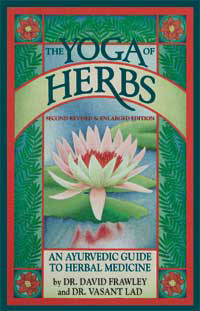
The Yoga of Herbs: An Ayurvedic Guide to Herbal Medicine
by David Frawley and Dr. Vasant Lad
288 pp Paper Back
ISBN: 0941524248
For the first time, here is a detailed explanation and classification of herbs, using the ancient system of Ayurveda. More than 270 herbs are listed, with 108 herbs explained in detail. Included are many of the most commonly used western herbs with a profound Ayurvedic perspective. Important Chinese and special Ayurvedic herbs are introduced. Beautiful diagrams and charts, as well as detailed glossaries, appendices and index are included.
An Ayurvedic Guide to Your Asana Practice
by David Frawley and Sandra Summerfield Kozak
296 pp os
ISBN: 091026130X
This is the first book that details how to choose Yoga asanas (Yoga poses) most appropriate for your unique body type according to the five thousand year old system of Ayurvedic medicine. These two systems of healing and energy management have long been regarded as effective methods of relieving stress, creating personal balance, eliminating ailments, and relieving chronic pain. Yoga for Your Type presents a fundamental understanding of both Yoga and Ayurveda and provides the information needed for you to balance your energy and feel healthy. “Editor’s Choice” Yoga Journal
Excerpt from Yoga for Your Type click here
Tantric Yoga and the Wisdom Goddesses
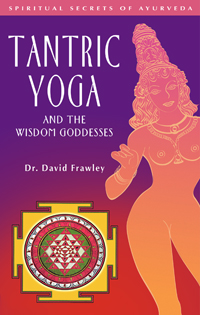
260 pp Paper Back
ISBN: 0910261393
“Tantric Yoga and the Wisdom Goddesses is an excellent introduction to the essence of Hindu Tantrism. The author discusses all the major concepts and offers valuable corrections for many existing misconceptions. He also introduces the reader to the core Tantric practices of meditation and mantra recitation, focusing on the ten Wisdom Goddesses” states Georg Feuerstein.
Tantra – perhaps the most popular and yet most misunderstood of the yogic teachings today – is a vast ocean of wisdom for enlightening the mind. It is not merely sex, with which most Westerners identify it, but an entire science of meditation.Tantric Yoga and the Wisdom Goddesses describes the deeper system of Tantra in its psychological and spiritual sophistication – unfolding the mysteries of life and death, being and non-being. It reveals Tantra as a profound methodology for reaching the highest states of consciousness. Tantric Yoga delineates one of the most important Tantric teachings – the Ten Wisdom Forms of the Goddess (Dasa Mahavidya) – on all levels from image worship to formless meditation practices, including mantras for each Goddess. It explains these great Goddesses in beautiful poetic and deep philosophical language, making them accessible archetypes to the modern mind. These ten forms are Kali, Tara, Sundari, Bhuvaneshvari, Bhairavi, Chinnamasta, Bagalamukhi, Dhumavati, Matangi, and Kamala. In a special section on the practice of Yoga, the book explains the subtle body, the chakras and their energy flows, and how these can be properly developed. For the first time in print in the West, it reveals the Ayurvedic system of inner transformation using the three principles of Prana, Tejas and Ojas, the spiritual energies of air, fire and water (Vata, Pitta and Kapha). It shows how we can develop these energies through outer and inner methods, including diet, herbs, gems, mantra and meditation. Tantric Yoga and the Wisdom Goddesses is based on unpublished teachings of the great yogi Vasishta Ganapati Muni, the foremost disciple of the great guru Ramana Maharshi. It follows the Tantric approach of Advaita Vedanta and South Indian Tantric traditions.
Robert Kleinman
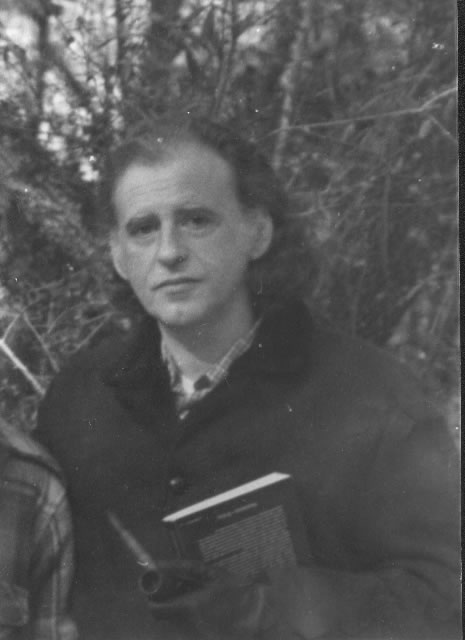
Robert Kleinman
The constant throughout Robert Kleinman’s life has been a deep interest in the cosmos and the individual’s place in it. As he explains in his book, he was awakened to the wonders of the universe as a teenaged soldier during a spiritual experience on a WWII battlefield in France. After completing his Army service, Kleinman began a long trek towards the heart of the cosmos at NYU, where he completed undergraduate studies in mathematics and physics. To generate funds for further study, he served the country again as a meteorologist in the Air Force, taking a degree in that discipline from Pennsylvania State University. He then entered the doctoral program in philosophy and cosmology at Columbia University.
Kleinman explored the spiritual traditions of India under the guidance of Swami Nikhilananda at the Ramakrishna-Vivekananda Center in New York City. While a student at Columbia, he undertook years of Zen practice with the great Isshu Miura Roshi at the First Zen Institute of New York. Well-grounded in meditation, he encountered Sri Aurobindo’s poetry in a bookshop. The vast and integrative vision of Sri Aurobindo enlarged and reshaped Kleinman’s life and purpose.
In 1961, he accepted a teaching post at Pensacola Junior College in Florida. It seemed an ideal place to quietly polish his dissertation. As they came to know the depth of his integrity and scope of his knowledge, the college’s administration was so appreciative that they afforded him full freedom to develop a broader philosophy program. Thus, in the early 1960s, a college freshman could attend classes with Kleinman like “Theories of the Universe” and “Comparative Religion” in the wilds of northwest Florida. Compassionate to the core, he guided scores of students towards careers, assisted them in resolving life challenges, and opened them to self-discovery. His reputation grew, and Dr. Kleinman became the most respected intellect within hundreds of miles, who could speak authoritatively to wide sweeps of scientific, artistic, philosophic, and spiritual concerns.
It was not thinking, but realization that formed the core of his efforts. Kleinman’s deepening study and practice of Sri Aurobindo’s integral yoga led him to visit India with his wife, Jan, and two of their children in 1969-1970. Posted as professor for a year to the Sri Jagadguru Chandrasekhara Bharati Memorial College in Sringeri, South India, Kleinman and his family visited the Sri Aurobindo Ashram in Pondicherry for lengthy periods. There they grew close to the Mother and to several of the leading exponents of her spiritual community.
When he returned to the States, he developed more fully the philosophy and religion curriculum at the college and shared the richness of his perspective with an intimate circle of students and friends. Many went on to distinguished academic and business careers, but all traced their understanding of the universe and their poise in life to his influence.
Kleinman wrote a number of articles during his career for diverse journals. He sacrificed significant writing potential, though, when he accepted larger administrative responsibilities for the college as Chairman of the History, Languages, and Philosophy Department. Over the years, Kleinman was awarded grants to numerous conferences on cosmology and metaphysics by the National Science Foundation and the National Endowment for the Humanities. A larger picture of his academic achievements appears below in his Biographical Data.
After retirement in 1992, Bob and Jan Kleinman moved to Boulder, Colorado, where over a period of years they carefully honed his studies of the cosmos and eventually carved this book out of a larger tree of knowledge. It was brought to its final shape after they returned to a grateful Pensacola. The Four Faces of the Universe rejuvenates cosmology and carries it beyond the confines of astronomy. The reader senses not just the shape of this magnificent and growing universe, but the larger Being whom it manifests.
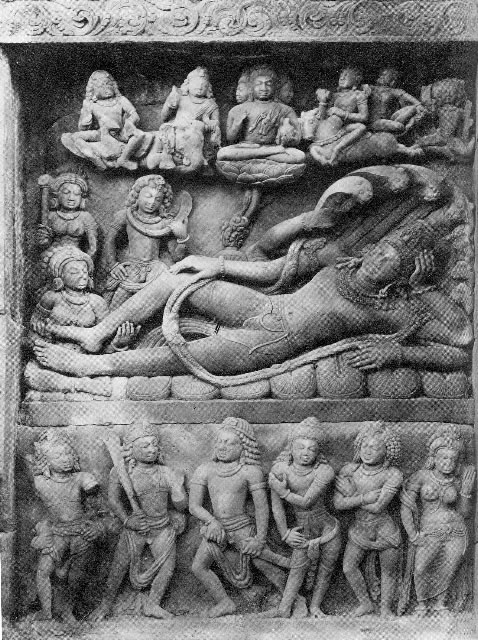
Vishnu Anantasayin
BIOGRAPHICAL DATA
Robert M. Kleinman
Born March 26, 1926 in Brooklyn, New York.
Attended New York University (B.A., Mathematics and Physics, 1951), Pennsylvania State University (B.S., Meteorology, 1954), and Columbia University (M.A., Ph.D., Philosophy, 1959, 1964).
Two tours of military service (U.S. Army, 1944-46; U.S. Air Force, 1953-57). Recipient of New York State Scholarship for Veterans, 1951-53). Professional meteorologist with the Air Weather Service (USAF), 1953-1957.
Lecturer in Philosophy at the University of Connecticut, Waterbury, CN, 1961. Taught philosophy, religion, cosmology, and interdisciplinary humanities at Pensacola Junior College, 1961-92. Professor of Philosophy and Chairman of the History, Languages, and Philosophy Department, 1988-92. Visiting Professor of Philosophy and Religion, the University of West Florida, Spring, 1969. Member of the Task Force on General Education, 1987. Recipient of the 1988 Academic Teaching Excellence Award. Member of the PJC Academy of Teaching Excellence. Retired in 1992. Professor Emeritus.
Awarded first sabbatical leave offered by PJC, Academic year 1969-70. Visiting Professor of Philosophy at the Sri Jagadguru Chandrasekhara Bharati Memorial College in Sringeri, South India, 1969-70. Offered a series of lectures on The Bhagavad Gita at the Nehru Memorial Library in Manipal, India, 1969.
Received a National Science Foundation Grant in 1973 to study contemporary scientific cosmology at Louisiana State University, Baton Rouge, LA (seminar directed by Remo Ruffini of Princeton University).
Recipient of three National Endowment for the Humanities Grants: (1) “The Exact Sciences in Antiquity” (Asger Aaboe, at Yale University, 1982), (2) “The Great Chain of Being in World Perspective” (Huston Smith, at the Pacific School of Religion, Berkeley, CA, 1985), (3) “Metaphysics and the Modern World” (George Lucas, at the University of Santa Clara, Santa Clara, CA, l986).
Many articles published in philosophical journals and books in the U.S.A., Great Britain, and India. Most recent publications: (1) an article in Contemporary Philosophy: The Journal of the Institute for Advanced Philosophic Research, Mar/Apr, 1991, (2) a paper included in New Essays in the Philosophy of Sarvepalli Radhakrishnan(Ed. S.S. Rama Rao Pappu), Sri Satguru Publications, India Books Centre, Delhi, 1995, and (3) an article in The Advent: A Quarterly Devoted to the Exposition of Sri Aurobindo’s Vision of the Future, August, 2004.
Numerous papers presented at meetings of the Socratic Society (The University of West Florida), The Sri Aurobindo International Centre of Education, Mysore University, The American Academy of Religion, and The International Congress of Vedanta (Miami University, Oxford, OH).
Attended lectures in Vedanta philosophy given by Swami Nikhilananda at the Ramakrishna-Vivekananda Center in New York City, 1957-59.
Studied Buddhism with the Zen Master Isshu Miura Roshi at the First Zen Institute of America in New York City, 1959-61.
Participated in a seminar on “Sri Aurobindo and Teilhard de Chardin” organized by Lois Duncan at the Sri Aurobindo Center, Crescent Moon Ranch, Sedona, AZ (1969). Pursued further research on the works of Sri Aurobindo at the Sri Aurobindo Ashram in Pondicherry, India (1969-70).
Attended seminars given by the Tibetan Lama Chögyam Trungpa Rinpoche at Naropa Institute in Boulder, CO (1974 and 1976). Took part in the “Seminar on the Sutras” at Mount Baldy Zen Center in California (directed by Joshu Sasaki Roshi in conjunction with the U.C.L.A. Extension Division), 1978, and a seminar on “Emptiness and Great Compassion,” conducted by Tenzin Gyatso, the Dalai Lama, at Harvard University, 1981.
Also attended a number of international conferences on philosophy: “Hegel and the Sciences,” sponsored by the Boston Colloquium for the Philosophy of Science, Boston University (1970), “Plotinus and Indian Philosophy, “at the Second International Congress of Neoplatonic Studies, Brock University, Ontario, Canada (1976), and “Einstein’s Century,” a Symposium at San Francisco State University focusing on the broader cultural impact of the life and work of Albert Einstein (l980). Did postgraduate study on Dante’s The Divine Comedy at the University of Colorado in Boulder (1994-5).
Traveled extensively in North America, Europe, Africa, and Asia, with periods of residence in France, Germany, Morocco, Great Britain, Thailand, and India. Did research on the life and work of the English poet William Wordsworth in the English Lake District (1971).
Past memberships in the American Philosophical Association, The American Academy of Religion, The Hermetic Academy, Pi Mu Epsilon (The National Mathematics Honors Society), and the American Meteorological Society.
©2006, 2007, 2008 Institute for Wholistic Education • Lotus Press *All Rights Reserved
Featured Title:
Four Faces of the Universe by Robert Kleinman
Four Faces of the Universe is an adventurous survey of a universe that is deeper than science can measure. It explores key perspectives by which we can gain insight into the cosmos – mythical, scientific, traditional and evolutionary – affirming what is valid in each. Its route takes us through the Stanzas of Dzyan, Einstein’s theories, quantum mechanics, the Hermetic Tradition and beyond. Along the way we meet great figures like Madame Blavatsky, Albert Einstein, Plato, Dante, and Sri Aurobindo, and we embrace the cosmos in works of art and imagination. A journey through the Four Faces suggests how we can find our place in the world and arrive at a soul-deep harmony in it.
352 pp Paper Back
ISBN: 0-940985-91-8 $19.95
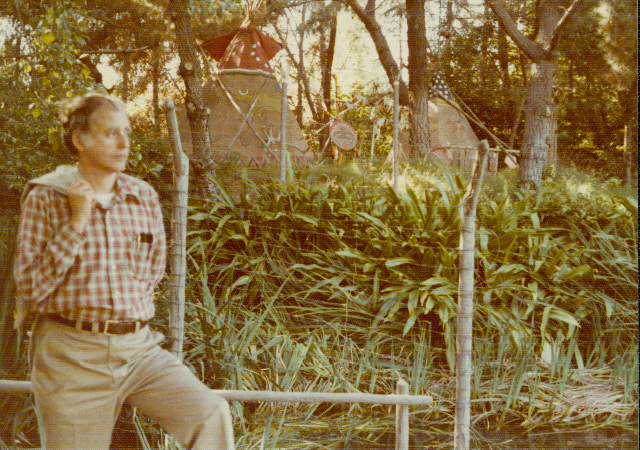
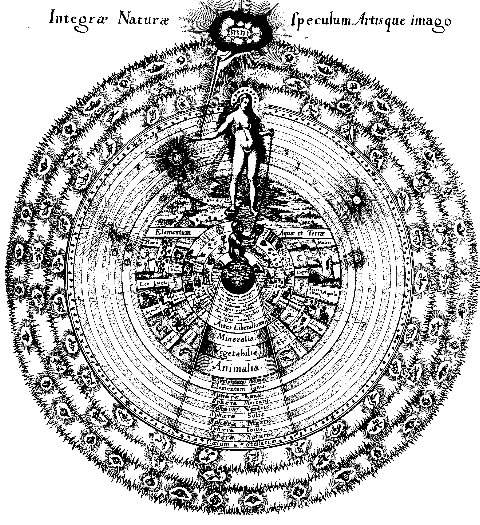
The Magical Universe
The Mother
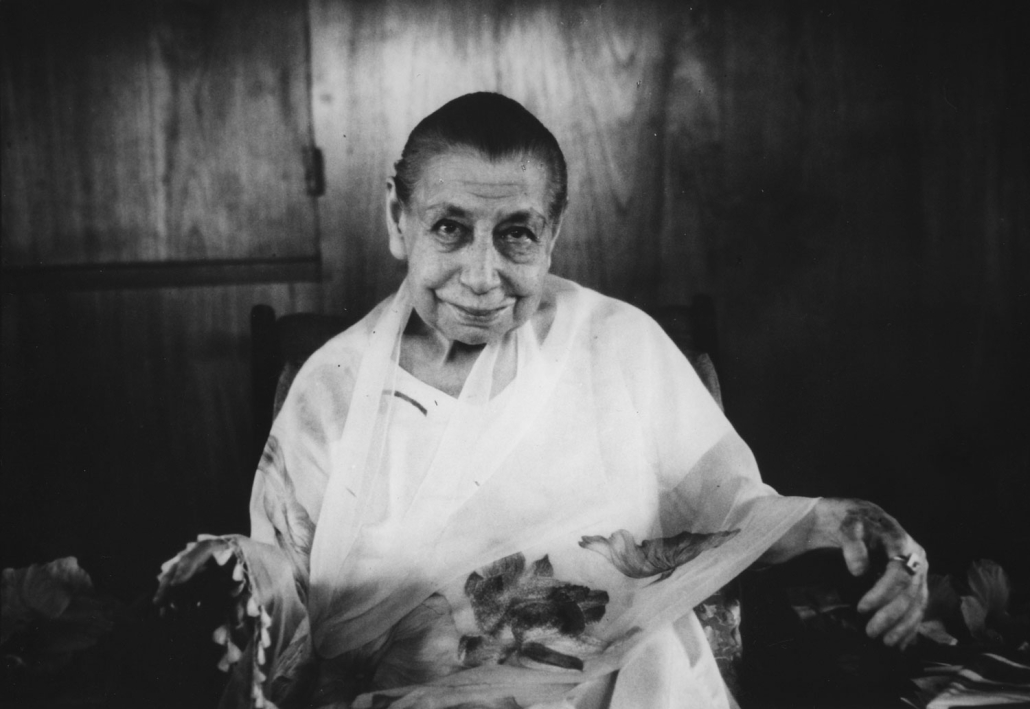
The Mother
The Mother was born in Paris as Mirra Alfassa in 1878. She studied art, music and occult sciences in her early life, guided by spiritual experience at a very early age. In 1914 she met Sri Aurobindo in Pondicherry, India and in 1920 she moved permanently to Pondicherry to join him as his spiritual collaborator. In 1926 she was formally given full charge over the Sri Aurobindo Ashram and the spiritual and material welfare of the disciples who had formed around Sri Aurobindo by that time. She contined to expand the scope of the work of integration of the inner and outer life with the founding of the International Centre of Education, a model school which puts into practice the integral education methods developed by her. In 1968 the Mother founded the international city of Auroville as a place for material and spiritual research for the future evolution of humanity in harmony with itself and its earthly environment.
The Mother’s writings are powerful, direct and decisive in their spiritual force and clarity.
Writings of the Mother:
Flowers and Their Messages:
309 pp Paper Back
ISBN: 094152468X
By entering into contact with the nature of a flower, its inner truth…one knows what it represents…if you are in contact with it, if you feel it, you can get an impression which may be translated as a thought. There is a kind of identification with the vibration, a perception of the quality that it represents…little by little there occurs a close approach between these vibrations, that are of the vital-emotional order, and the vibration of mental thought.
Commentaries on the Dhammapada
One of the ancient texts of the Pali Canon of Buddhism, the Dhammapada has a revered place among the noted scriptures of the world. It is quite special in its focus on the practical implementation of the Buddha’s teachings in daily life, through the examination and self-control of one’s thoughts, words and deeds. “Dhamma” is sometimes translated as “virtue”, but in its deeper sense it is the innate law of life.
“Pada” means “footstep” or path. The Dhammapada is not so much a religious text as a text of practical psychology for those wishing to undertake an inner, spiritual discipline to change their lives.
The Buddha broke out of the conventions of his time in order to speak to the condition of mankind and provide a path toward liberation from the wheel of birth, death and Karma, the chain of consequences. The Dhammapada encapsulates his basic teachings and provides guidelines for gaining insight and an understanding that goes beyond any single teaching or religion. One of the “great books” of humanity, the Dhammapada can provide benefit to seekers from any philosophic or religious or spiritual path with its timeless non-sectarian wisdom.
The present edition is especially valuable as it contains an English translation that is at once clean and concise, while also filled with a spiritual sense and meaning. This translation compares favourably with those that have appeared in the past from an intellectual standpoint, and it is certain to awaken in the reader a sense of the reverence and
spiritual aspiration that truly resides in the text.
The commentaries are by the Mother, who was the spiritual collaborator of Sri Aurobindo and the spiritual guide of the Sri Aurobindo Ashram for many years. After each Dhammapada chapter, she has added her own observations and insights to turn our focus towards the realizations in consciousness that the text implies. Her practical acumen and spiritual wisdom create a force for understanding that is missing from a purely academic commentary.
Other Major Titles:
Collected Works of the Mother
17 volume set
7100 pp Paper Back
ISBN: 0940985780
This 2nd edition of the Collected Works of the Mother in 17 volumes has been released to coincide with the 125th Birth Anniversary of the Mother. The Mother’s writings contain a powerful force of yogic action that can transform the seeker’s practice.
Prayers and Meditations:
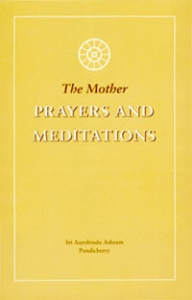 380 pp Paper Back
380 pp Paper Back
ISBN: 9788170580522
This volume contains the prayers and meditations selected for publication by the Mother from her diaries of 1912 to 1919, and five prayers of a later period.
Health and Healing in Yoga:
351pp Paper Back
ISBN: 9788170580232
The extracts for this book have been selected from the writings and talks of the Mother. Most of the chapters begin with a series of short written statements arranged under the first title. The titles which follow are generally longer passages taken from talks; a few are from essays and messages
Audio:
Four Aspects of the Mother CD
58.58 min Audio CD
Sri Aurobindo’s powerful “Matri Upanishad” chapter 6 of The Mother, read by The Mother. The mantric force of the writing is accentuated by the power of The Mother’s reading.
Mother’s Agenda
Fascinating and powerful insights transcribed from talks between The Mother and Satprem
- Volume 1 1951-1960
- Volume 2 1961
- Volume 3 1962
- Volume 4 1963
- Volume 5 1964
- Volume 6 1965
- Volume 7 1966
- Volume 8 1967
- Volume 12 1971
- Volume 13 1972-1973
U.S. editions of The Mother’s writings now available:
Compilations from Sri Aurobindo and The Mother:
- Growing Within
- Hidden Forces of Life
- Living Within
- Living Words
- Looking from Within
- Our Many Selves
- Powers Within
- Psychic Being
- Yoga of Sleep and Dreams
Back to Sri Aurobindo Information Page
Institute for Wholistic Education Home Page
rev 1/2/21
Compilations from the Writings of Sri Aurobindo and The Mother: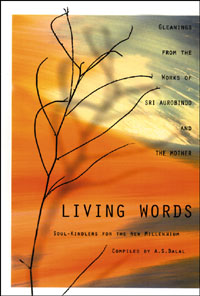
Living Words:
Soul-Kindlers for the New Millenium
198 pp Paper Back
ISBN: 0910261423
Inspiring selections from the works of Sri Aurobindo and the Mother dealing with spiritual growth towards a new consciousness beyond mind which has now manifested itself upon the earth, heralding the birth of a New World.
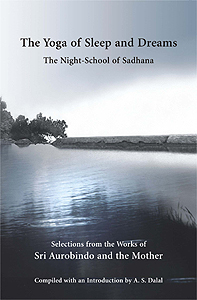 The Yoga of Sleep and Dreams:
The Yoga of Sleep and Dreams:
The Night-School of Sadhana
144 pp Paper Back
ISBN: 0940985748
The Yoga of Sleep and Dreams: The Night-School of Sadhana The practice of yoga continues day and night. This book aids the seeker in becoming conscious and turning sleep and dreams into the opportunity for real and substantial progress on the path of yoga.
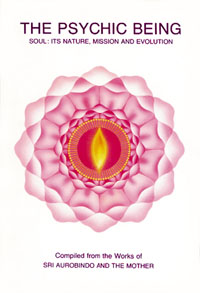 The Psychic Being
The Psychic Being
Soul: Its Nature, Mission and Evolution
223 pp Paper Back
ISBN: 0941524566
The present compilation is an attempt to bring together in one volume the manifold teachings pertaining to the psychic being which are to be found in the numerous works of Sri Aurobindo and The Mother. The selections deal with the nature of the psychic being, shedding the light of Sri Aurobindo and The Mother on the inner constitution of the human being and on various related questions such as the process of inner growth, the afterlife, and rebirth.
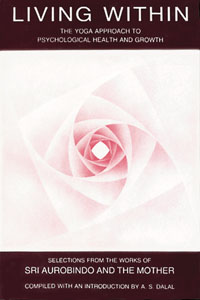 Living Within
Living Within
The Yoga Approach to Psychological Health and Growth
Western psychotherapy and the personal growth process has gained considerably from the experience acquired within Eastern traditions. Living Within makes it apparent that there is a great deal more to learn that is of both practical and theoretical value.
Indian imported editions of The Mother’s writings now available:
- Collected Works 17 vol.set
- Conversations 1929-30-31
- Education Part 1
- Education Part 2
- Education Part 3
- Flowers: Spiritual Significance
- Health and Healing in Yoga
- Ideal Child
- Lesson of Life
- Mantras of the Mother
- Mother on Herself
- Notes on the Way
- On Thoughts &Aphorisms
- On Women
- Prayers & Meditations
- Questions and Answers 1953
- Remain Young
- Sunlit Path
- Supreme Discovery
Sri Aurobindo’s Writings:
Sri Aurobindo was a prolific writer over a wide range of subjects including philosophy, yoga, poetry, human unity and much more. Most of his major works have been published in US editions by Lotus Press.
Outline of Sri Aurobindo’s Teaching
For details on many more titles open the PDF documents:
Sri Aurobindo’s Main Works PDF
PDF documents require Adobe Acrobat Reader
Lotus Press Sri Aurobindo and The Mother and related literature menu page providing a complete list of available US and Indian editions, including Sri Aurobindo, The Mother, compilations, Sri M P Pandit and books by other authors
Sri Aurobindo
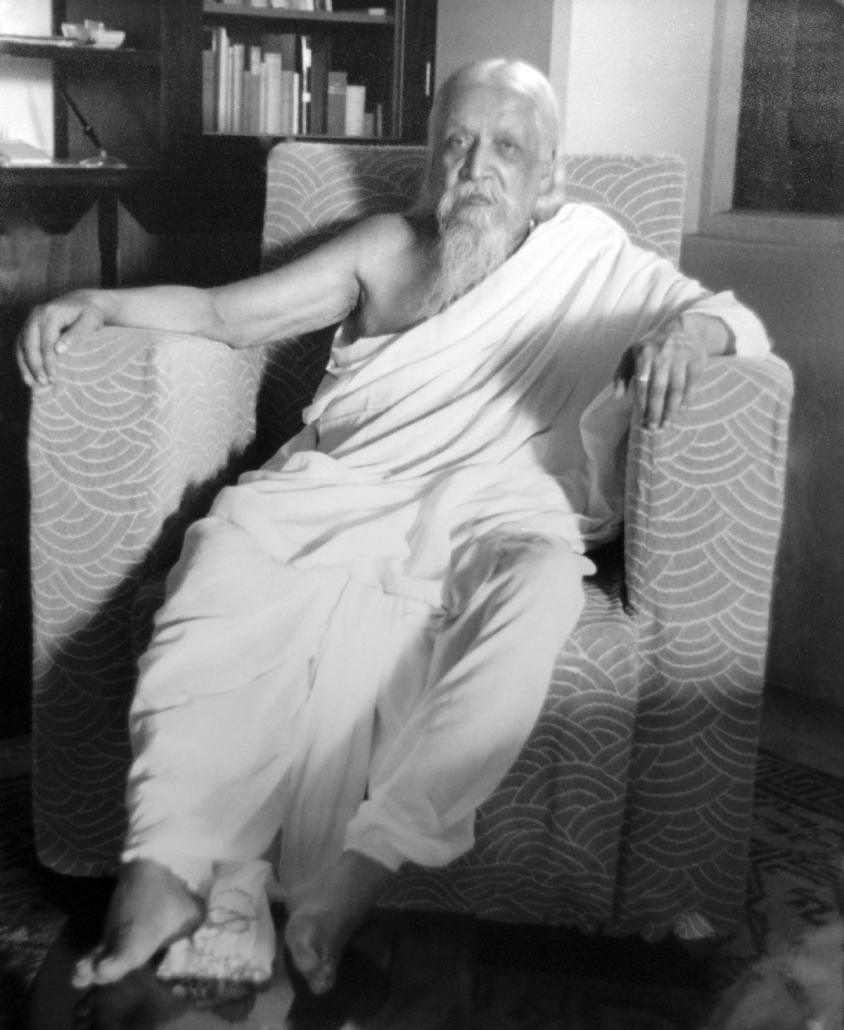

Sri Aurobindo
“The most vital issue of the age is whether the future progress of humanity is to be governed by the modern economic and materialistic mind of the West or by a nobler pragmatism guided, uplifted and enlightened by spiritual culture and knowledge….” Sri Aurobindo
We are facing in today’s world an existential crisis. We are experiencing a major die-off of species, connected with human industrial development, consequent climate change, pollution of land, sea and air, chemicals that negatively impact genetics and basic health, and increasing inequality of resource allocation for an ever-growing world population. This leads to violence, conflict and mass migration events as well. The industrial revolution and its consequences are developments of human mental development. While we are now recognizing the vast unintended consequences of human industry, we find that we cannot reach any consensus due to conflicting views, ideas and opinions, combined with the admixture of desire, greed and short-sightedness. Traditional viewpoints and relationships are challenged and we see the rise of cultures across the world now interacting with one another on an unprecedented scale. People everywhere are questioning the ideas that have brought us to this crisis point.
Albert Einstein clearly understood the need of humanity to find another way: “We cannot solve our problems with the same thinking we used when we created them.” It is thus time for a new way, a new evolution of consciousness. Sri Aurobindo reviewed the evolutionary development of consciousness as the secret meaning behind the outer development of forms from matter, to life and then to mind, eventually bringing us to the reflective, analytical and rational logical intellect that humanity signifies today. He pointed out that this evolution is not completed and a new level of consciousness, based not in fragmented thought and division into independent parts, but founded in unity and oneness as the basis and container of all the myriad forms and forces, must develop. It is this new level of consciousness, which he called “supramental” (above the mind) that has the capability of providing us the solutions we so desperately need to solve the existential crisis in today’s world.
This is not a matter of developing a new religion or a new philosophical direction. It is a matter of spiritual development and the practical application of the new consciousness to our life in the world.
Sri Aurobindo’s unique contribution to human potential and growth developed through his integration of Western and Eastern cultures. He brought the energy and vision of the West, with its focus on the perfection of the physical, material and mental areas of human life together with the spiritual development and philosophical directions developed over thousands of years in the East.
Sri Aurobindo honors the contribution of each of these divergent streams of human activity. His writings help us reconcile the apparent conflicts of two diverse societies and at the same time develop a new, wider, embracing viewpoint which vibrates with spiritual force, mental clarity and a heart of love and compassion for the efforts of humanity.
Sri Aurobindo has been considered one of the foremost philosophers of the 20th Century, but he was far more than just a philosopher. He was a political activist, a mystic, a spiritual leader, and a poet, a yogi and a teacher. Sri Aurobindo experienced the range of human activity and used that experience to communicate his insight in a way that we can appreciate and understand.
Outline of Sri Aurobindo’s Teaching
What others have to say about Sri Aurobindo:
“Sri Aurobindo’s yoga points the way toward the kind of transformative practice we need to realize our greatest potentials. No philosopher or contemplative of modern times has done more to reveal our possibilities for extraordinary life.” Michael Murphy, founder, Esalen Institute and author, The Future of the Body
“Sri Aurobindo (is) the foremost of Indian thinkers, who has realized the most complete synthesis between the genius of the West and of the East.” Romain Rolland, Nobel Laureate
“Aurobindo treatises are among the most important works of our time in philosophy, ethics and humanities. Sri Aurobindo himself (is) one of the greatest living sages of our time, and a most eminent moral leader.” Pitirim Sorokin, Harvard University
“A new type of thinker, one who combines in his vision the alacrity of the West with the illuminations of the East. To study his writings is to enlarge the boundaries of one’s knowledge.” London Times Literary Supplement.
“Sri Aurobindo is not only the most original philosopher of modern India–he was also an accomplished yogi who based his metaphysical vision on his own inner discoveries.” Stephen Phillips, Professor of Philosophy, University of Texas, Austin
“one of the great masters of spiritual synthesis.” Ram Dass
“Sri Aurobindo is one of the most important and influential spiritual figures of our time, whose work deserves to be better known.” Robert Johnson, author, He and She
“Sri Aurobindo serves humanity as a spiritual master who directs and sustains all seekers whose inner aspiration leads them to a yoga as wide and deep as life itself.” Robert McDermott, Former President, California Institute of Integral Studies
Sri Aurobindo’s Writings:
Sri Aurobindo was a prolific writer over a wide range of subjects including philosophy, yoga, poetry, human unity and much more. Most of his major works have been published in US editions by Lotus Press.
Annotations on Sri Aurobindo’s Books
Introductions to Sri Aurobindo:
Sri Aurobindo or The Adventure of Consciousness by Satprem
Satprem takes us along with him in a thorough and methodical exploration of Sri Aurobindo’s yoga. With him, we understand the virtues of mental silence, learn about the invisible gradations of consciousness above the mind, decipher the many beings and forces that inhabit us. All our unknown potentialities come alive before our eyes. Most importantly, we appeciate how these untapped possibilities within us relate to our daily life, how they can transform it from the inside, as it were, and how, ultimately, Sri Aurobindo’s experience leads to a divine rehabilitation of Matter. Sri Aurobindo, or the Adventure of Consciousness is one of the all-time bestselling introductions to the Integral Yoga of Sri Aurobindo, and is a work that has inspired many thousands of people with it’s lucid and engaging style and substance.
ISBN: 978-0-9387-1004-2 paperback 336 pp. $17.95
The Integral Yoga: Sri Aurobindo’s Teaching and Method of Practice
ISBN: 978-0-9415-2476-6 paperback 416 pp. $14.95
Institute for Wholistic Education Home Page
Updated 1/2/21
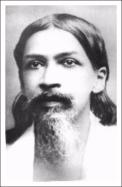

Gems from Sri Aurobindo:
“The earliest formula of Wisdom promises to be its last, — God, Light, Freedom, Immortality.”
“To hope for a true change of human life without a change of human nature is an irrational and unspiritual proposition.”
“As man moves towards spiritual freedom, he moves also towards spiritual oneness.”
“The Divine Truth is greater than any religion or creed or scripture or idea or philosophy.”
Sri Aurobindo’s Integral Psychology
The Psychic Being:
Soul: Its Nature, Mission and Evolution
by Sri Aurobindo and the Mother
compiled by Dr. A.S. Dalal
223 pp Paper Back
ISBN: 0941524566
The present compilation is an attempt to bring together in one volume the manifold teachings pertaining to the psychic being which are to be found in the numerous works of Sri Aurobindo and The Mother. The selections deal with the nature of the psychic being, shedding the light of Sri Aurobindo and The Mother on the inner constitution of the human being and on various related questions such as the process of inner growth, the afterlife, and rebirth.
Contents:
Preface
Meaning and Nature of the Psychic Being
What is Meant by the Psychic Being
Atman, Jivatman and the Psychic
Psychic-Mental, Psychic-Vital
Psychic-Physical
The Double Soul
Nature of the Psychic Being
The Psychic and the Spiritual
Emotion and Love – Vital and Psychic
Knowledge – Mental and Psychic
Role, Function and Action of the Psychic
Function of the Psychic
Influence and Action of the Psychic
Guidance through Organisation of Life
The Psychic Being – Centre for Self-Unification
Growth and Development of the Psychic
Evolution and the Psychic
Process of Psychic Growth and Development
The Psychic Being and Sadhana
Three Steps of Self-Realisation and the Triple Transformation
Becoming Conscious of the Psychic Being – Need for Sadhana
The Psychic Being and Conversion
Psychic Change – First Necessity
Emergence of the Psychic – Bringing Forward the Psychic
The Sunlit Way of the Psychic
The Afterlife and Rebirth
The Process of Rebirth
What Survives after Death and Reincarnates
The Psychic’s Choice and Conditions of Rebirth
Memory of Past Lives
More Lights on the Psychic Being
Glossary / References / Selected Bibliography / Index
Living Within: Yoga Approach to Psychological Health and Growth
by Sri Aurobindo and the Mother
compiled by Dr. A.S. Dalal


179 pp Paper Back
ISBN: 0941524221
Western psychotherapy and the personal growth process has gained considerably from the experience acquired within Eastern traditions. Living Within makes it apparent that there is a great deal more to learn that is of both practical and theoretical value.
Contents:
INTRODUCTION
1. GENERAL METHODS AND PRINCIPLES
The One Way – Quiet, Calm, Peace
Becoming More Conscious
Observation versus Analysis
Using the Will
Rest and Relaxation
Sleep
Recuperating One’s Energies
Detachment and Rejection
Equality
2. DISTURBANCES OF MIND
Mental Noise
Obsessive and Compulsive Thoughts
Unruly and Perturbing Thoughts
Anxiety
3. DISTURBANCES OF THE VITAL
Fear
Boredom and Lack of Energy
Depression
Anger
Haste and Agitation
Feelings of Inferiority
Sensitiveness
Jealousy
Transforming the Vital
4. DISTURBANCES OF THE BODY AND PHYSICAL CONSCIOUSNESS
Rest, Quiet, Goodwill
Will, Discipline, Endurance
Preoccupation with Illness
Faith and Suggestion
Medicines
Healing the Nerves
5. DISTURBANCES OF THE SUBCONSCIENT
How to Deal with the Subconscient
Subconscient Habits
Collective Subconscious Influences
6. THE PSYCHIC BEING AND PSYCHOLOGICAL HEALTH
The Psychic – Source of Inner Well-Being
7. EXERCISES FOR GROWTH AND MASTERY
Stepping Back
Becoming Aware of “Oneself’
Self-Observation and Self-Organization
Visualization for Discovering One’s Being
Awakening the Inner Consciousness
Exercising Static Power
Becoming Aware of the Shadow
Mastery Through Attitude
Identification
Widening the Consciousness
Dynamic Meditation
Drawing upon Helpful Forces
Self-Recollection – Remembering
Using Life as a Mirror
Establishing Peace in the Mind
Glossary / References / Index
Looking From Within: A Seeker’s Guide to Attitudes for Mastery and Inner Growth
by Sri Aurobindo and The Mother
compiled by Dr. A.S. Dalal
185 pp Paper Back
ISBN: 0941524817
Three chief categories of seekers have been kept in view in selecting passages for this compilation: those who wish to obtain a greater life-mastery; those who, while pursuing the common goals of life, also aim at something beyond the ordinary life and seek to grow towards a higher or spiritual state of being; and those for whom spiritual growth is the primary purpose and occupation of life……
Contents:
Introduction
Looking at Life and Circumstances
1. Power of Attitude
2. The Determining Power is Within
3. The Right Spirit
4. Seeking to Know
5. Listening to the Inner Law
6. The Ordinary View of Spiritual Life
7. The Spiritual View of theOrdinary Life
8. Inner State and Outer Circumstances
9. The Meaning of Circumstances
10. Living Within
11.Meditations on Circumstances
Looking at Oneself and Others
1. Discovering a Hidden Treasure
2. Turning to the Coming Light
3. Defects of Others
4. Equality, Goodwill
5. Dealing with Others
6. Sin – A Thing Not in its Right Place
7. Helping Others
Action and Work
1. Acting from Within
2. Choice of Work
3. The Work that Purifies
4. Fatigue and Rest
5. Handling Physical Things
Ordeals and Difficulties
1. Difficulties Across the Path
2. Difficulties – A Help for Realisation
3. Difficulties of the Character
4. Universal Adverse Forces
5. Discouragement and Depression
6. Worry and Perplexity
7. Dryness and Arrest of Progress
8. Illness and Suffering
Attitudes on the Path
I. Quiet, Aspiration and Peace
2. Sincerity
3. Personal Effort and Surrender
4. Confidence, Faith and Trust
5. Patience, Perseverance, Endurance, Cheerfulness
6. Awareness and Vigilance
7. The Witness Attitude – Detachment
8. Rejection
9. Possessing Nothing
10 Physical Body – Food
11. Progress for the Sake of Progress
Glossary
References
Index
The Hidden Forces of Life
by Sri Aurobindo and The Mother
compiled by Dr. A.S. Dalal
203 pp Paper Back
ISBN: 0941524604
Dealt with herein are the diverse forces which act on us, determining the course of events, influencing our thoughts, feelings and actions, affecting our moods, health and level of energy, pulling the human being to nether depths or beckoning him towards lofty heights. Also shown are the hidden forces behind evolution and the universal action.
Contents:
Life through the Eye of the Yogin
Play of Forces
Forces of Action and Reaction and Destiny
Forces in Human Interchange … 16
Human Will, Nature-Force and Divine Will
Hidden Forces Within
The Subconscient, the Subliminal and the Superconscient
The Psychic
Hidden Forces Around
Outside Suggestions and Vibrations
Forces of Our Formations
Forces of Illness and Accident
Cosmic and Universal Forces
Nature and Action of Universal Forces
Universal Vital Force
Occult Forces
Occultism – Science of Hidden Forces
Occult Worlds and Entities
Magic., Miracles and the Planchette
Hidden Worlds and Evolutionary Forces
Existence and Influence of Hidden World
Action of Higher Worlds and Evolution
Supermind – Force of the New World
Spiritual Forces of Help and Succour
Existence of Spiritual Force
The Divine Grace
Life – A Mass of Vibrations
Glossary / References / Index
Flowers and Their Messages
ByThe Mother
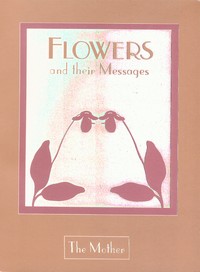

List Price: $29.95
309 pp Paper Back
ISBN: 094152468X
By entering into contact with the nature of a flower, its inner truth…one knows what it represents…if you are in contact with it, if you feel it, you can get an impression which may be translated as a thought. There is a kind of identification with the vibration, a perception of the quality that it represents…little by little there occurs a close approach between these vibrations, that are of the vital-emotional order, and the vibration of mental thought.
The Mother puts us in contact with the spiritual, mental, emotional and physical vibrations of flowers and provides insight into how we can contact these energies and permit them to open us up to new forces, thoughts, emotions and directions. Practical psychology at its best.
Sri Aurobindo’s Writings:
Sri Aurobindo was a prolific writer over a wide range of subjects including philosophy, yoga, poetry, human unity and much more. Most of his major works have been published in US editions by Lotus Press.
Outline of Sri Aurobindo’s Teaching
For details on many more titles open the PDF documents:
Sri Aurobindo’s Main Works PDF
PDF documents require Adobe Acrobat Reader
Back to Sri Aurobindo Information Page
Institute for Wholistic Education Home Page
rev 1/2/21
IWE Affiliations
The Institute works with the following organizations on an ongoing basis:
American Institute of Vedic Studies
Other Relevant Titles:
Our Many Selves: Practical Yogic Psychology
by Sri Aurobindo and the Mother
compiled by Dr. A.S. Dalal
285 pp Paper Back
ISBN: 0940985349
Many of us face the difficulty of trying to change something in our nature, only to find that it is either difficult or virtually impossible. We struggle, try to suppress various actions, only to have these actions rebound on us and cause feelings of failure, shame, guilt or frustration. The key to solving this problem actually lies in a deeper understanding of the true nature of our psychological being. We are actually composed of various different “parts” or “planes” of action that combine together, interact with one another and impinge upon one another. This understanding allows us to differentiate between a mental idea, a force of will, an emotional movement, a vital energy, or a physical structure, and thereby more clearly understand the results of our psychological efforts and growth activities.
by Sri Aurobindo and The Mother
compiled by Dr. A.S. Dalal
196 pp Paper Back
ISBN: 0941524965
The book throws light on the nature of various inner powers which we already possess and use more or less unconsciously, as well as with latent powers within, which are as yet undeveloped. The book is of interest to the general reader as well as to the spiritual seeker.
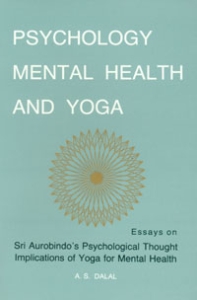

Psychology, Mental Health and Yoga
by Dr. A.S. Dalal
166 pp Paper Back
ISBN: 0941524647
Essays on Sri Aurobindo’s psychological thought. The implications of yoga for mental health.
Contents:
PART ONE
PSYCHOLOGY AND YOGA
Sri Aurobindo and Modern Psychology
Sri Aurobindo and the Concept of the Unconscious in Psychology
Self- Awareness: In Psychology andSri Aurobindo’s Yoga
The Nature of Identification
PART TWO
MENTAL HEALTH AND YOGA
Psychological Disturbances: A Model Based on Sri Aurobindo’s Yoga
Attitudes, Mental Health and Yoga
Mastery, Mental Health and Yoga
The Healing Power of Peace
Index
Integral Yoga Psychology Metaphysics and Transformation as taught by Sri Aurobindo
Edited by Debashish Banerji
440 pp Paper Back
ISBN: 9781608692392
Integral Yoga Psychology is a new attempt to position the Integral Yoga of Sri Aurobindo and the Mother within the frame of yoga psychology, as an inquiry related to transpersonal and whole-person psychologies. This book contains 11 essays by leading scholar-practitioners of integral yoga, sketching its possibility-space as a psychology. It attemps this through a hermeneutics of the texts of Sri Aurobindo and the Mother, as well as their own and their disciples’ practices and experiences. It also makes a beginning at locating the field in its larger contexts, through comparative, qualitative and empirical studies, as well as probing the clinical possibilities of its models.
Growing Within: Psychology of Inner Development
by Sri Aurobindo and The Mother
compiled by Dr. A.S. Dalal
192 pp Paper Back
ISBN: 094152471X
In essence, evolution is the progressive emergence of higher levels of consciousness. With the appearance of man, evolution has become an increasingly more conscious and accelerated process, in contrast to the pre-human stages. Inner growth is the rapid process of conscious evolution
Contents:
Introduction
Section I
Emergence from Unconsciousness
SectionII
Awakening of Consciousness
Section III
Growth of Consciousness: Basic Requisites
Aspiration
Sincerity
Faith
The Teaching – Mental Preparation
The Teacher
Patience and Right Attitude
Section IV
Growth of Consciousness: First Steps
and Foundation
Purification
Concentration
Equanimity and Peace
Section V
Growth of Consciousness: Means and Methods
Many Methods
Meditation
Work
Bhakti – Devotion
Following One’s Own Path
Section VI
Growth of Consciousness: Difficulties and Pitfalls
Section VII
Growth of Consciousness: Inner Experiences
Section VIII
The Psychic Being and Inner Growth
Section IX
Reversal of Consciousness – The New Birth
Glossary / References / Index
The Yoga of Sleep and Dreams:
The Night-School of Sadhana
by Sri Aurobindo and the Mother
Compiled by Dr. A. S. Dalal
List Price: $7.95
144 pp Paper Back
ISBN: 0940985748
The Yoga of Sleep and Dreams: The Night-School of Sadhana The practice of yoga continues day and night. This book aids the seeker in becoming conscious and turning sleep and dreams into the opportunity for real and substantial progress on the path of yoga. Introduced and compiled by Dr. A.S. Dalal.
Preface
Introduction
I. Sleep: Doorway to Worlds Within
II. Dreams and Dream Experiences
III. Remembering and Understanding Dreams
IV. Sleep, Dreams and Sadhana
Appendix 1: On Dreams
Appendix 2: Three Dreams
Appendix 3: The Mother of Dreams
Glossary
References
Index
U.S. editions of Integral Psychology Compilations
Sri Aurobindo’s Books
Sri Aurobindo’s Main Works:
The Life Divine
1113 pp Paper Back
ISBN: 0941524612
The Life Divine explores for the Modern mind the great streams of Indian metaphysical thought, reconciling the truths behind each and from this synthesis extends in terms of conciousness the concept of evolution. The unfolding of Earth’s and man’s spiritual destiny is illuminated, pointing the way to a Divine Life on Earth. Extensive Index
This one volume contains the entire book including:
The Life Divine
Book 1: Omnipresent Reality and the Universe
1 – The Human Aspiration
2 – The Two Negations: The Materialist Denial
3 – The Two Negations: The Refusal of the Ascetic
4 – Reality Omnipresent
5 – The Destiny of the Individual
6 – Man in the Universe
7 – The Ego and the Dualities
8 – The Methods of Vedantic Knowledge
9 – The Pure Existent
10 – Conscious Force
11 – Delight of Existence: The Problem
12 – Delight of Existence: The Solution
13 – The Divine Maya
14 – The Supermind as Creator
15 – The Supreme Truth-Consciousness
16 – The Triple Status of the Supermind
17 – The Divine Soul
18 – Mind and Supermind
19 – Life
20 – Death, Desire and Incapacity
21 – The Ascent of Life
22 – The Problem of Life
23 – The Double Soul in Man
24 – Matter
25 – The Knot of Matter
26 – The Ascending Series of Substance
27 – The Sevenfold Chord of Being
28 – Supermind, Mind and the Overmind Maya
Book 2: The Knowledge and the Ignorance – The Spiritual Evolution
Part 1: The Infinite Consciousness and the Ignorance
1 – Indeterminates, Cosmic Determinations and the Indeterminable
2 – Brahman, Purusha, Ishwara – Maya, Prakritit, Shakti
3 – The Eternal and the Individual
4 – The Divine and the Undivine
5 – The Cosmic Illusion; Mind, Dream and Hallucination
6 – Reality and the Cosmic Illusion
7 – The Knowledge and the Ignorance
8 – Memory, Self-Consciousness and the Ignorance
9 – Memory, Ego and Self-Experience
10 – Knowledge by Identity and Separative Knowledge
11 – The Boundaries of the Ignorance
12 – The Origin of the Ignorance
13 – Exclusive Concentration of Consciousness-Force and Ignorance
14 – The Origin and Remedy of Falsehood, Error, Wrong and Evil
Book 2: The Knowledge and the Ignorance – The Spiritual Evolution
Part 2: The Knowledge and the Spiritual Evolution
15 – Reality and the Integral Knoweldge
16 – The Integral Knowledge and the Aim of Life; Four Theories of Existence
17 – The Progress to Knowledge – God, Man and Nature
18 – The Evolutionary Process – Ascent and Integration
19 – Out of the Sevenfold Ignorance Towards the Sevenfold Knowledge
20 – The Philosophy of Rebirth
21 – The Order of the Worlds
22 – Rebirth and Other Worlds; Karma, the Soul and Immortality
23 – Man and the Evolution
24 – The Evolution of the Spiritual Man
25 – The Triple Transformation
26 – The Ascent Towards Supermind
27 – The Gnostic Being
28 – The Divine Life
The Synthesis of Yoga
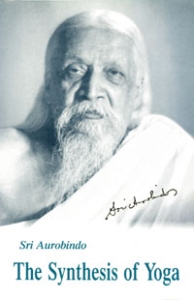
889 pp Paper Back
ISBN: 0941524655
“Truth of philosophy is of a merely theoretical value unless it can be lived, and we have therefore tried in The Synthesis of Yoga to arrive at a synthetical view of the principles and methods of the various lines of spiritual self-discipline and the way in which they can lead to an integral divine life in the human existence”. Index.
This one volume contains the entire book including:
The Synthesis of Yoga
Parts One and Two Introduction: The Conditions of the Synthesis; Part I: The Yoga of Divine Works; Part II: The Yoga of Integral Knowledge. Part III: The Yoga of Divine Love; Part IV: The Yoga of Self-Perfection.
Introductions to Sri Aurobindo’s Philosophy:
The Mind of Light
112 pp Paper Back
ISBN: 0940985705
This is an excellent short introduction to the teaching and spiritual philosophy of Sri Aurobindo. Sri Aurobindo’s teaching is founded on an evolution of consciousness as the hidden inner meaning and secret purpose of life on earth. In The Mind of Light, Sri Aurobindo gives us both the conditions for these changes, and the likely direction these changes will take. The book is a guide to the future evolution of consciousness and gives all those who aspire for something more luminous and harmonious a clear indication of the value and goal of their efforts. The book includes an enhanced annotated bibliography to guide the reader further into the the writings by and about Sri Aurobindo and the Integral Yoga.
From the Back Cover:
An evolution of consciousness is the hidden inner meaning and purpose of life on earth–this is the foundation for the teaching of Sri Aurobindo. Sri Aurobindo has been described as one of the greatest sages of our time. His viewpoint spans time and space and brings our somewhat confused seeking and aspiration into focus.
The secret thread running through all existence is the evolution of consciousness. Consciousness is involved within matter, and it successively manifests at higher levels in the course of time. Thus plants, animals, and human beings have come forward through time on this planet. Sri Aurobindo points out clearly that this evolutionary process has not been completed. Within the seeking and aspiration that move through humanity, there is an underlying pressure for the manifestation of a new level of consciousness. He called it the “supramental” consciousness, which is basically a descriptive term for the next level of awareness beyond the human mental capabilities. This new consciousness will refashion both our physical bodies and our mental capabilities into a new integrated, harmonious structure.
Once we recognize the ongoing evolutionary urge of life, and the nature of the present evolutionary process, it becomes clear that a new being must evolve beyond the human. This being will have capacities as far beyond the human as the human has capacities beyond the animal.
In The Mind of Light, Sri Aurobindo gives us both the conditions for these changes, and the likely direction these changes will take. The book is a guide to the future evolution of consciousness and gives all those who aspire for something more luminous and harmonious a clear indication of the value and goal of their efforts.
The Future Evolution of Man: The Divine Life Upon Earth
168 pp Paper Back
ISBN: 0940985551
Sri Aurobindo introduces his theme of the evolution of consciousness as the centerpiece of his vision of man’s meaning and purpose on earth. This is the best introduction available to the philosophy of Sri Aurobindo. The annotated table of contents provides an excellent overview of the material.
From the back cover:
We feel swept into a movement of accelerated evolution. Our lives are propelled at an ever-increasing speed of change. Our advances in technology lead to dislocations in society as we fail to comprehend either the impact of these changes on human social institutions or the unintended consequences that develop as a reaction to the changes we initiate. The complexity of the systems we are changing goes beyond the capability of the human mind, and at the end of the day, we are confronted with the nightmare of technology threatening our extinction without the ability to put the proverbial genie back into the bottle.
As we struggle to achieve some kind of balance between our technological capabilities and the functioning of the natural world, we eventually reach the point where we can understand that technology cannot, in and of itself, ensure either the survival of humanity or the satisfaction of the deeper urges that underlie our lives.
While some give up hope and lapse into despair and nihilism, others turn toward the deeper spiritual impulses that reside deep within us, and recognize that this tension and pressure is in fact the sign of a deeper change that must take place, the replacement of mental, vital and physical goals with a spiritual one: the outflowering of the deeper inner purpose that drives our evolutionary development on the planet.
We can see in the dreams and aspirations of humanity this true inner evolutionary direction. We dream of peace, harmony, beauty, love, oneness. We aspire toward a spiritual purpose for living beyond the fulfillment of our bodily needs and desires.
Sri Aurobindo offers us an insight into the true meaning of our lives on earth and the present evolutionary crisis we are facing. He reminds us that each being has contained within itself the eventual shape and life force it is meant to express, and that within the human soul is the answer to the current seemingly impossible struggle. Our human destiny on the planet lies in the future evolution of our consciousness to a level that can resolve all the contradictions in a new luminous and harmonious oneness of life and action.
The Integral Yoga: Sri Aurobindo’s Teaching and Method of Practice
416 pp Paper Back
ISBN: 0941524760
One of the foremost Indian philosophers of the twentieth century, Sri Aurobindo was also a political activist, a mystic and a spiritual leader. Between 1927 and 1950, Sri Aurobindo remained in seclusion while perfecting a new kind of spiritual practice he called the Integral Yoga. During this period he gave detailed guidance to disciples and seekers, responding to thousands of inquiries. This correspondence constitutes a major body of work on the practice of yoga-sadhana. The present volume brings together a comprehensive selection of Sri Aurobindo’s letters, organized by area of interest. An ideal introduction to his work and vision, it will also serve as an invaluable daily handbook for seekers of all paths – beginners and experienced practitioners alike. Glossary.
Sri Aurobindo, or the Adventure of Consciousness
ISBN: 9780938710042
by Satprem – translated by Venet, Luc
Paperback: 336 pp
Satprem takes us along with him in a thorough and methodical exploration of Sri Aurobindo’s yoga. With him, we understand the virtues of mental silence, learn about the invisible gradations of consciousness above the mind, decipher the many beings and forces that inhabit us. All our unknown potentialities come alive before our eyes. Most importantly, we appeciate how these untapped possibilities within us relate to our daily life, how they can transform it from the inside, as it were, and how, ultimately, Sri Aurobindo’s experience leads to a divine rehabilitation of Matter. Sri Aurobindo, or the Adventure of Consciousness is one of the all-time bestselling introductions to the integral Yoga of Sri Aurobindo, and is a work that has inspired many thousands of people with it’s lucid and engaging style and substance.
Sri Aurobindo’s Writings:
Sri Aurobindo was a prolific writer over a wide range of subjects including philosophy, yoga, poetry, human unity and much more. Most of his major works have been published in US editions by Lotus Press.
Outline of Sri Aurobindo’s Teaching
For details on many more titles open the PDF documents:
Sri Aurobindo’s Main Works PDF
PDF documents require Adobe Acrobat Reader
U.S. editions of Sri Aurobindo’s writings now available:
- Bases of Yoga
- Bhagavad Gita and Its Message
- Dictionary of Sri Aurobindo’s Yoga
- Essays on the Gita
- The Future Evolution of Man: The Divine Life On Earth
- The Human Cycle: The Psychology of Social Development
- Hymns to the Mystic Fire
- The Ideal of Human Unity
- The Integral Yoga: Sri Aurobindo’s Teaching and Method of Practice
- The Life Divine
- The Mind of Light
- The Mother
- Rebirth and Karma
- Savitri: A Legend and a Symbol
- Secret of the Veda
- Sri Aurobindo Primary Works 12 vol. set
- The Synthesis of Yoga
- The Upanishads
- Vedic Symbolism
Lotus Press Sri Aurobindo and related literature menu page providing a complete list of available US and Indian editions, including Sri Aurobindo, The Mother, compilations, Sri M P Pandit and books by other authors
SRI AUROBINDO’S WRITINGS NOW ON AMAZON KINDLE AS E-BOOKS: Sri Aurobindo’s Writings Available as E-Books for Amazon Kindle Readers or App The Amazon Kindle is perhaps the most popular e-book reader in the world, and the APP works on desktop computers, laptops, android phones, tablets etc. The APP can be downloaded free from Amazon.com We are systematically making Sri Aurobindo’s writings available for the Kindle App and Readers. Here are a few of them, with more links to be provided soon:
Bhagavad Gita and Its Message Bhagavad Gita and Its Message
Dictionary of Sri Aurobindo’s Yoga (compiled by M P Pandit) Dictionary of Sri Aurobindo’s Yoga
Essays on the Gita Essays on the Gita
The Future Evolution of Man The Future Evolution of Man
Hidden Forces of Life (compiled by AS Dalal from writings of Sri Aurobindo and The Mother Hidden Forces of Life
The Human Cycle: The Psychology of Social Development The Human Cycle: The Psychology of Social Development
The Ideal of Human Unity The Ideal of Human Unity
Integral Yoga: Sri Aurobindo’s Teaching and Method of Practice Integral Yoga
The Life Divine The Life Divine
Looking from Within (compiled by AS Dalal from writings of Sri Aurobindo and The Mother Looking from Within
The Mind of Light The Mind of Light (The Supramental Manifestation on Earth)
The Mother The Mother
Our Many Selves (compiled by AS Dalal from writings of Sri Aurobindo and The Mother Our Many Selves
Powers Within (compiled by AS Dalal from writings of Sri Aurobindo and The Mother Powers Within
The Psychic Being (compiled by AS Dalal from writings of Sri Aurobindo and The Mother Psychic Being
Rebirth and Karma Rebirth and Karma
Savitri: A Legend and a Symbol Savitri: A Legend and a Symbol
Secret of the Veda Secret of the Veda
Sri Aurobindo on the Tantra (compiled by M P Pandit) Sri Aurobindo on the Tantra
The Synthesis of Yoga The Synthesis of Yoga
The Upanishads The Upanishads
Vedic Symbolism (compiled by M P Pandit) Vedic Symbolism
Yoga of Sleep and Dreams (compiled by AS Dalal from writings of Sri Aurobindo and The Mother Yoga of Sleep and Dreams
By Sri M P Pandit:
Sri Aurobindo and His Yoga Sri Aurobindo and His Yoga
Teaching of Sri Aurobindo Teaching of Sri Aurobindo
SRI AUROBINDO’S BOOKS NOW AVAILABLE ON GOOGLE PLAY AS E-BOOKS:
Google Play provides e-book versions for Android devices, including smartphones, tablets, or android e-book readers.
The Mother THE MOTHER
Bases of Yoga BASES OF YOGA
Essays on the Gita ESSAYS ON THE GITA
The Human Cycle: Psychology of Social Development The Human Cycle: The Psychology of Social Development
Ideal of Human Unity IDEAL OF HUMAN UNITY
The Life Divine THE LIFE DIVINE
The Mind of Light THE MIND OF LIGHT
Savitri: A Legend and a Symbol SAVITRI: A LEGEND AND A SYMBOL
Sri Aurobindo on the Tantra SRI AUROBINDO ON THE TANTRA
The Synthesis of Yoga THE SYNTHESIS OF YOGA
Back to Sri Aurobindo Information Page
Institute for Wholistic Education Home Page rev 1/2/21
IWE Affiliations
The Institute works with the following organizations on an ongoing basis:
American Institute of Vedic Studies
Other Recommended Titles:
Bhagavad Gita and Its Message
325 pp Paper Back
ISBN: 0941524787
The Bhagavad Gita, literally “The Song of God,” is one of the most important spiritual and religious texts of the world, and is to Hindus what the Torah is to Jews, the Bible to Christians, and the Quran to Moslems. With text, translation, and Sri Aurobindo’s commentary, this is probably the finest translation and commentary on the Bhagavad Gita that we have seen.
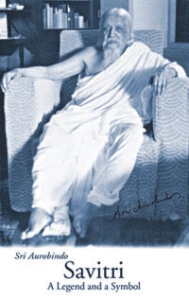

Savitri: A Legend and A Symbol
816 pp Paper Back
ISBN: 0941524809
In this epic spiritual poem, Sri Aurobindo reveals his vision of mankind’s destiny within the universal evolution. He sets forth the optimistic view that life on earth has a purpose, and he places our travail within the context of this purpose: to participate in the evolution of consciousness that represents the secret thread behind life on Earth.
The one volume contains the entire book including:
Part One:
The Book of Beginnings; The Book of the Traveller of the Worlds; The Book of the Divine Mother.
Part Two:
The Book of Birth and Quest; The Book of Love; The Book of Fate; The Book of Yoga; The Book of Death.
Part Three:
The Book of Eternal Night; The Book of the Double Twilight; The Book of Everlasting Day; Epilogue: The Return to Earth; Sri Aurobindo’s Letters on Savitri.
466 pp Paper Back
ISBN: 0914955233
The Upanishads is a collection of Sri Aurobindo’s final translations of and commemtaries on every Upanishad or other Vedantic text he worked on. Upanishads are the ancient treatises on spiritual truths as envisioned by the seers, sages and rishis of the civilization of India. Index.
The volume contains: Texts, Translations and Commentaries: Philosophy of the Upanishads; On translating the Upanishads; The Upanishads; Early translations of some Vedantic Texts; Supplement.
200 pp Paper Back
ISBN: 0941524256
Sri Pandit gives us an overview of Sri Aurobindo’s life, his writings and his Integral Yoga. In doing so, he takes time to introduce the major principles of yoga and relates in a simple yet dynamic form the path open to the seekers of spiritual perfection.
Indian imported editions of Sri Aurobindo’s writings now available:
- Collected Poems
- Correspondence with Sri Aurobindo
- Essays Divine and Human
- Evening Talks with Sri Aurobindo
- Foundations of Indian Culture
- Future Poetry
- Hour of God
- Human Cycle, Ideal of Human Unity, War & Self-Determination
- Isha Upanishad
- Letters on Poetry, Literature and Art
- Letters on Yoga Vol. 1
- Letters on Yoga Vol. 2
- Letters on Yoga Vol. 3
- Letters on Yoga Vol. 4
- Lights on Yoga
- More Lights on Yoga
- The Mother, with letters on the Mother
- Renaissance in India
- Supramental Manifestation Upon Earth
- Yoga and Its Objects
Series of Detailed Study Guides covering Sri Aurobindo’s Major Writings
page by page study with commentary by Santosh Krinsky and page referenced passages from Sri Aurobindo’s Writings. Also available on Amazon as Kindle E-Book Editions:
- Readings in Sri Aurobindo’s The Human Cycle: Psychology of Social Development
- Readings in Sri Aurobindo’s The Upanishads
- Readings in Sri Aurobindo’s Rebirth and Karma
- Readings in Sri Aurobindo’s The Life Divine, Volume 1
- Readings in Sri Aurobindo’s The Life Divine Volume 2
- Readings in Sri Aurobindo’s The Life Divine Volume 3
- Readings in Sri Aurobindo’s The Ideal of Human Unity
- Readings in Sri Aurobindo’s The Synthesis of Yoga, Vol. 1
- Readings in Sri Aurobindo’s The Synthesis of Yoga, Vol. 2
- Readings in Sri Aurobindo’s The Synthesis of Yoga, Vol. 3
- Readings in Sri Aurobindo’s The Synthesis of Yoga, Vol. 4
- Readings in Sri Aurobindo’s Essays on the Gita, Volume 1
- Readings in Sri Aurobindo’s Essays on the Gita, Volume 2
- Readings in Sri Aurobindo’s Future Evolution of Man
- Readings in The Mother by Sri Aurobindo
Sri Aurobindo’s Teaching and Method of Sadhana
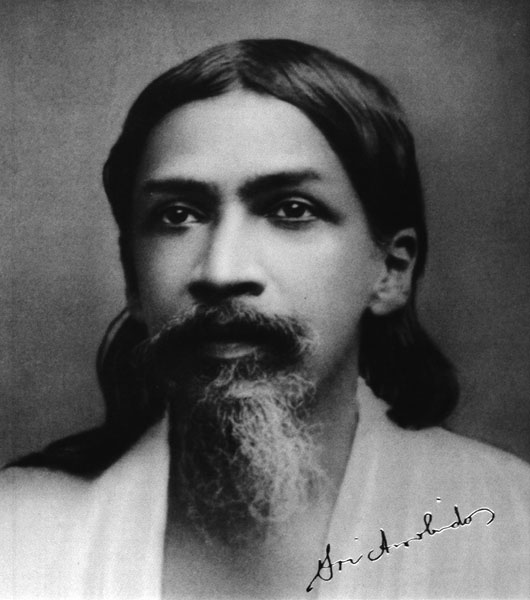
Sri Aurobindo’s Teaching and Method of Sadhana
The following is from SABCL, Vol. 26, “Sri Aurobindo on Himself”, pp. 95-97. It also appears in the recent book The Mind of Light published by Lotus Press in December 2003.
The teaching of Sri Aurobindo starts from that of the ancient sages of India that behind the appearances of the universe there is the Reality of a Being and Consciousness, a Self of all things, one and eternal. All beings are united in that One Self and Spirit but divided by a certain separativity of consciousness, an ignorance of their true Self and Reality in the mind, life and body. It is possible by a certain psychological discipline to remove this veil of separative consciousness and become aware of the true Self, the Divinity within us and all.
Sri Aurobindo’s teaching states that this One Being and Consciousness is involved here in Matter. Evolution is the method by which it liberates itself; consciousness appears in what seems to be inconscient, and once having appeared is self-impelled to grow higher and higher and at the same time to enlarge and develop towards a greater and greater perfection. Life is the first step of this release of consciousness; mind is the second; but the evolution does not finish with mind, it awaits a release into something greater, a consciousness which is spiritual and supramental. The next step of the evolution must be towards the development of Supermind and Spirit as the dominant power in the conscious being. For only then will the involved Divinity in things release itself entirely and it become possible for life to manifest perfection.
But while the former steps in evolution were taken by Nature without a conscious will in the plant and animal life, in man Nature becomes able to evolve by a conscious will in the instrument. It is not, however, by the mental will in man that this can be wholly done, for the mind goes only to a certain point and after that can only move in a circle. A conversion has to be made, a turning of the consciousness by which mind has to change into the higher principle. This method is to be found through the ancient psychological discipline and practice of Yoga. In the past, it has been attempted by a drawing away from the world and a disappearance into the height of the Self or Spirit. Sri Aurobindo teaches that a descent of the higher principle is possible which will not merely release the spiritual Self out of the world, but release it in the world, replace the mind’s ignorance or its very limited knowledge by a supramental Truth-Consciousness which will be a sufficient instrument of the inner Self and make it possible for the human being to find himself dynamically as well as inwardly and grow out of his still animal humanity into a diviner race. The psychological discipline of Yoga can be used to that end by opening all the parts of the being to a conversion or transformation through the descent and working of the higher still concealed supramental principle.
This, however, cannot be done at once or in a short time or by any rapid or miraculous transformation. Many steps have to be taken by the seeker before the supramental descent is possible. Man lives mostly in his surface mind, life and body, but there is an inner being within him with greater possibilities to which he has to awake – for it is only a very restricted influence from it that he receives now and that pushes him to a constant pursuit of a greater beauty, harmony, power and knowledge. The first process of Yoga is therefore to open the ranges of this inner being and to live from there outward, governing his outward life by an inner light and force. In doing so he discovers in himself his true soul which is not this outer mixture of mental, vital and physical elements but something of the Reality behind them, a spark from the one Divine Fire. He has to learn to live in his soul and purify and orientate by its drive towards the Truth the rest of the nature. There can follow afterwards an opening upward and descent of a higher principle of the Being. But even then it is not at once the full supramental Light and Force. For there are several ranges of consciousness between the ordinary human mind and the supramental Truth-Consciousness. These intervening ranges have to be opened up and their power brought down into the mind, life and body. Only afterwards can the full power of the Truth-Consciousness work in the nature. The process of this self-discipline or Sadhana is therefore long and difficult, but even a little of it is so much gained because it makes the ultimate release and perfection more possible.
There are many things belonging to older systems that are necessary on the way – an opening of the mind to a greater wideness and to the sense of the Self and the Infinite, an emergence into what has been called the cosmic consciousness, mastery over the desires and passions; an outward asceticism is not essential, but the conquest of desire and attachment and a control over the body and its needs, greeds and instincts are indispensable. There is a combination of the principles of the old systems, the way of knowledge through the mind’s discernment between Reality and the appearance, the heart’s way of devotion, love and surrender and the way of works turning the will away from motives of self-interest to the Truth and the service of a greater Reality than the ego. For the whole being has to be trained so that it can respond and be transformed when it is possible for that greater Light and Force to work in the nature.
In this discipline, the inspiration of the Master, and in the difficult stages his control and his presence are indispensable – for it would be impossible otherwise to go through it without much stumbling and error which would prevent all chance of success. The Master is one who has risen to a higher consciousness and being and he is often regarded as its manifestation or representative. He not only helps by his teaching and still more by his influence and example but by a power to communicate his own experience to others.
This is Sri Aurobindo’s teaching and method of practice. It is not his object to develop any one religion or to amalgamate the older religions or to found any new religion – for any of these things would lead away from his central purpose. The one aim of his Yoga is an inner self-development by which each one who follows it can in time discover the One Self in all and evolve a higher consciousness than the mental, a spiritual and supramental consciousness which will transform and divinise human nature.
Frequently Asked Questions:
What are the main lines of practice of Sri Aurobindo’s Yoga?
In Sri Aurobindo’s view, Man, at present, lives mostly in his surface mind, life and body. There is an inner being within which pushes him to a constant pursuit of a greater beauty, harmony, power and knowledge. He has to awake to the greater possibilities of this inner being and purify and orientate by its drive towards the Truth the rest of the nature.There can follow afterwards an opening upward to the several ranges of consciousness between the ordinary human mind and the Supramental Truth-Consciousness and their power brought down into the mind life and body. This will enable the full power of the Truth-Consciousness to work in the nature.
Is this not a very difficult spiritual discipline?
The opening of all parts of the being to a conversion through a descent and working of the higher Consciousness cannot be done at once or in a short time or by any rapid or miraculous transformation. Many steps have to be taken by the seeker before this is possible. The process of this discipline is therefore long and difficult but even a little of it is so much gained because it makes the ultimate release and perfection more possible.
Institute for Wholistic Education Home Page
(c) All quotations from Sri Aurobindo are copyright Sri Aurobindo Ashram, Pondicherry, India. All rights reserved.
IWE Affiliations
The Institute works with the following organizations on an ongoing basis:
Lotus Press (US publisher of Sri Aurobindo’s writings)
Sri Aurobindo Studies Daily Blog
Sri Aurobindo’s Writings Facebook Page
Internatural (online retailer natural health & wellness products)
Four Worlds Development Corp. (First Nations)
Lotus Light Enterprises (wholesale distributor natural health & wellness products)
Lotus Brands, Inc. (natural health & wellness brands)
Auroma International, Inc. (importer of Auroshikha Incense & Chandrika Soap)
Inner Worlds Music (featuring Merlin’s Magic
New Leaf Distributing Co. (wholesale distributor of metaphysical and wellness books)
American Institute of Vedic Studies
to read PDF files
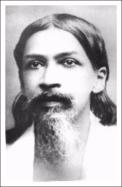

Gems from Sri Aurobindo:
“A civilisation is to be judged by the power of its ideas.”
“Evolution is the one eternal dynamic law and hidden process of the earth-nature.”
“All existence is a manifestation of God.”
“Spirituality is a single word expressive of three lines of human aspiration toward divine knowledge, divine love and joy, divine strength.”
“We imagine that the soul is in the body, almost a result and derivation from the body; but it is the body that is in the soul and a result and derivation from the soul.”
“There in the silence few have ever reached, Thou shalt see the Fire burning on the base stone and the deep cavern of thy secret soul.”
“A deeper brotherhood, a yet unfound law of love is the only sure foundation possible for a perfect social evolution, no other can replace it.”
“Only by the ascent to a highest Truth and the descent of that highest Truth can Love be delivered from the cross and placed on the throne.”
“To find, know and possess the Divine existence, consciousness and nature and to live in it for the Divine is our true aim and the one perfection to which we must aspire.”
“True happiness lies in the finding and maintenance of a natural harmony of spirit, mind and body.”
“The heart of man is nearer to the Truth than his intelligence.”
“Without realisation our mental belief cannot become a dynamic reality.”
“The example is more powerful than the instruction.”
“An inch of experience goes farther than a yard of logic.”
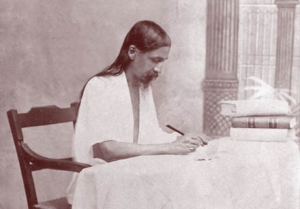
Sri Aurobindo’s Writings:
Sri Aurobindo was a prolific writer over a wide range of subjects including philosophy, yoga, poetry, human unity and much more. Most of his major works have been published in US editions by Lotus Press.

